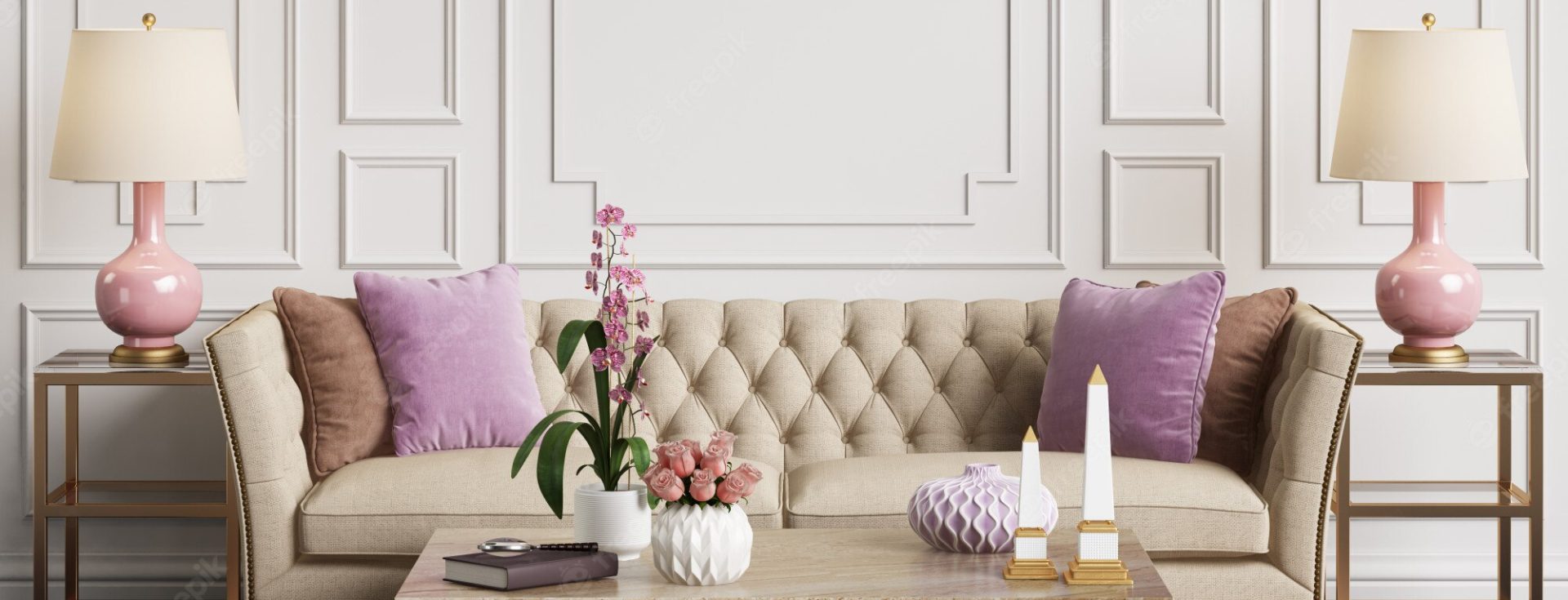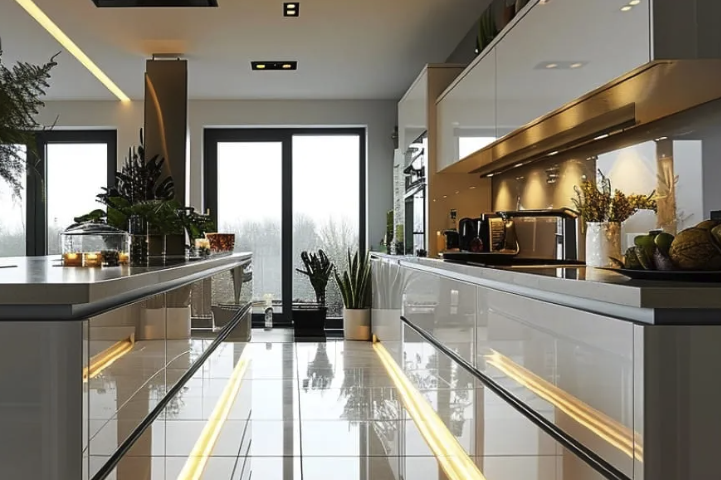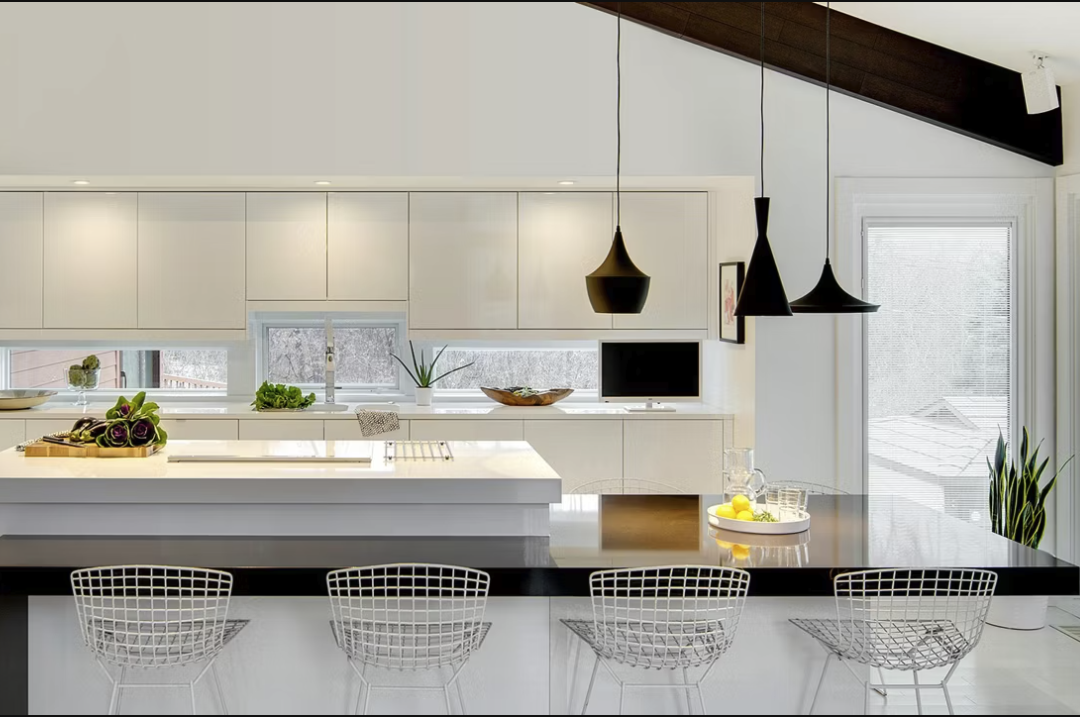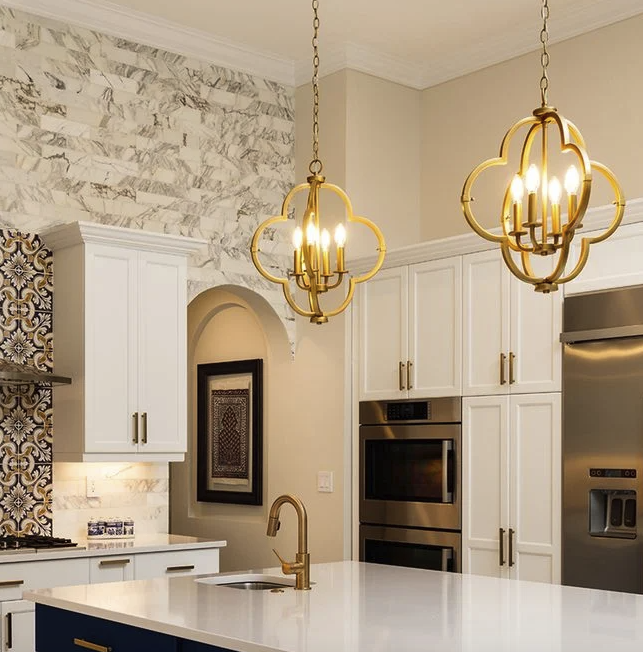Lighting plays a pivotal role in the kitchen, serving not only as a functional necessity but also as a key element in the overall design and ambiance of the space. A well-lit kitchen enhances visibility, making it easier to prepare meals, read recipes, and navigate the area safely. Poor lighting can lead to accidents, such as cutting oneself while chopping vegetables or misplacing ingredients.
Therefore, it is essential to consider the type and placement of lighting fixtures to ensure that the kitchen is both safe and efficient for cooking and entertaining. Moreover, lighting significantly influences the mood and atmosphere of the kitchen. A bright, well-lit kitchen can create an inviting environment for family gatherings and social interactions, while softer lighting can foster a more intimate setting for evening meals.
The right lighting can highlight architectural features, showcase beautiful cabinetry, and accentuate decorative elements. In essence, lighting is not merely a functional aspect of kitchen design; it is an integral part of creating a space that feels warm, welcoming, and stylish.
Choosing the Right Chandelier for Your Kitchen
Selecting the appropriate chandelier for your kitchen involves considering several factors, including size, style, and functionality. The size of the chandelier should be proportionate to the dimensions of the kitchen. A large chandelier can serve as a stunning focal point in a spacious kitchen with high ceilings, while a smaller fixture may be more suitable for a compact area.
It is crucial to measure the space where the chandelier will hang to ensure that it does not overwhelm or underwhelm the room’s proportions. In addition to size, the style of the chandelier should complement the overall aesthetic of the kitchen. For instance, a modern kitchen may benefit from sleek, minimalist designs with clean lines and metallic finishes, while a rustic kitchen might call for a chandelier made from reclaimed wood or wrought iron.
The choice of materials and colors can also impact the chandelier’s visual appeal. A glass or crystal chandelier can add a touch of elegance and sophistication, while a vintage-inspired piece can evoke charm and character. Ultimately, the right chandelier should harmonize with the kitchen’s decor while fulfilling its lighting needs.
Different Styles of Kitchen Chandeliers
Kitchen chandeliers come in a myriad of styles, each offering unique characteristics that can enhance the overall design of the space. One popular style is the industrial chandelier, which often features exposed bulbs, metal frames, and a raw aesthetic. This type of chandelier works exceptionally well in urban or loft-style kitchens, where its rugged appearance can complement other industrial elements like stainless steel appliances and concrete countertops.
On the other end of the spectrum lies the traditional chandelier, characterized by ornate designs, intricate detailing, and often adorned with crystals or glass accents. These chandeliers can add a touch of elegance to classic or transitional kitchens, creating a sense of timeless beauty. Additionally, farmhouse-style chandeliers have gained popularity in recent years, typically featuring wooden elements and a more casual design that evokes a cozy, rustic feel.
Each style offers distinct advantages and can dramatically alter the kitchen’s atmosphere depending on personal taste and design goals.
Installation and Placement Tips for Kitchen Chandeliers
Proper installation and placement of a kitchen chandelier are crucial for maximizing its effectiveness and aesthetic appeal. When determining where to hang the chandelier, consider its proximity to key areas such as the kitchen island or dining table. A common guideline is to hang the chandelier approximately 30 to 36 inches above the surface of the table or countertop to ensure adequate illumination without obstructing views or creating glare.
Additionally, it is essential to consider the height of the ceiling when installing a chandelier. In kitchens with high ceilings, a larger chandelier may be necessary to fill the vertical space adequately. Conversely, in kitchens with lower ceilings, opting for a flush mount or semi-flush mount chandelier can prevent the fixture from feeling overwhelming or cramped.
Furthermore, ensuring that electrical wiring is safely installed and up to code is vital for both safety and functionality. Consulting with a professional electrician may be advisable if you are unsure about installation procedures.
How to Maintain and Clean Your Kitchen Chandelier
Maintaining and cleaning your kitchen chandelier is essential for preserving its beauty and functionality over time. Dust and grease can accumulate on light fixtures in kitchens due to cooking activities, which can dull their appearance and reduce their brightness. Regular cleaning should be part of your home maintenance routine; ideally, chandeliers Kneson should be cleaned every few months or as needed based on their exposure to cooking fumes.
To clean a chandelier effectively, start by turning off the power supply to avoid any electrical hazards. Use a soft cloth or feather duster to gently remove dust from the fixture’s surface. For more thorough cleaning, especially if there are grease stains or fingerprints on glass or crystal components, a mixture of warm water and mild dish soap can be used.
Avoid harsh chemicals that could damage finishes or materials. If your chandelier has intricate details or hard-to-reach areas, consider using a soft-bristle brush or an old toothbrush to dislodge dirt without scratching surfaces.
Enhancing the Ambiance with Additional Lighting Fixtures
While chandeliers serve as stunning focal points in kitchen lighting design, incorporating additional lighting fixtures can further enhance the ambiance and functionality of the space. Task lighting is particularly important in areas where food preparation occurs; under-cabinet lighting is an excellent option for illuminating countertops without casting shadows. LED strip lights or puck lights installed beneath cabinets provide bright illumination that makes cooking tasks easier.
Accent lighting can also play a significant role in creating an inviting atmosphere in the kitchen. Pendant lights hung over an island or breakfast bar not only provide additional light but also add visual interest and style. Wall sconces can be strategically placed to highlight artwork or architectural features while contributing to overall illumination.
By layering different types of lighting—ambient, task, and accent—you can create a dynamic environment that adapts to various activities throughout the day, from cooking family meals to hosting dinner parties with friends. In conclusion, understanding the importance of lighting in the kitchen is essential for creating both functional and aesthetically pleasing spaces. Choosing the right chandelier involves careful consideration of size and style while installation requires attention to detail for optimal placement.
Regular maintenance ensures that your chandelier remains beautiful over time, while additional lighting fixtures can enhance ambiance and functionality. By thoughtfully integrating these elements into your kitchen design, you can create an inviting atmosphere that reflects your personal style and meets your practical needs.





